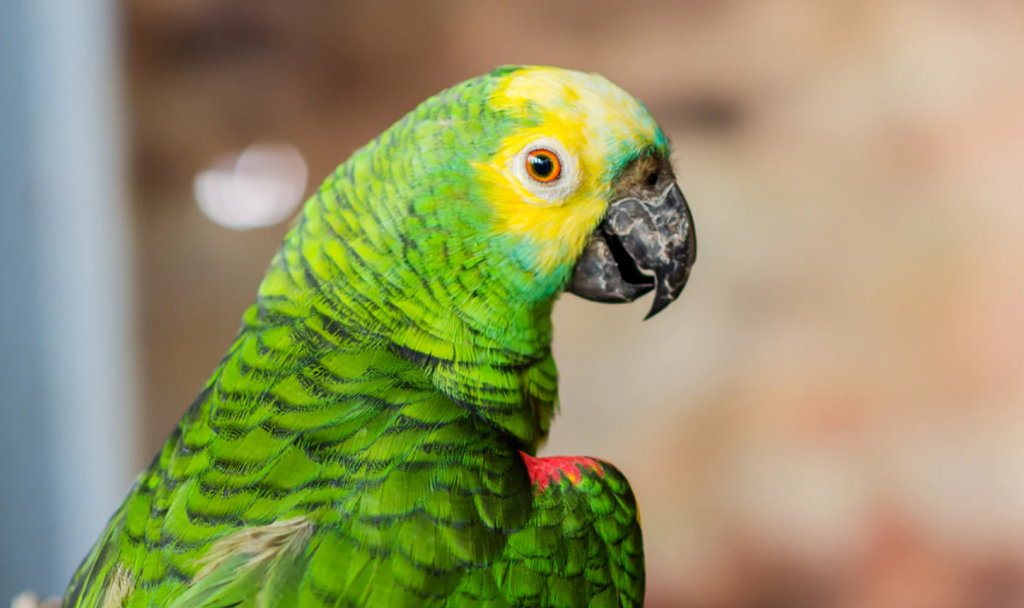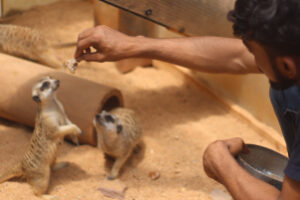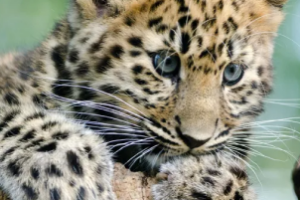
WORLD OF ANIMALS : AMAZON PARROTS
Amazon parrots are amongst the most colorful and beautiful birds in the world. These birds are extremely intelligent and, of course, exotic. They are among the more popular medium-sized parrot species, which might have something to do with their Friendly personalities. Amazon parrots have a remarkable ability to mimic human speech and other sounds. Partly because of this, they are popular as pets. Amazon parrots comprises 25 Species and some 48 Subspecies.
The commonly kept includes Blue fronted Amazon, Double yellow headed Amazon, Yellow napped, Lilac-crowned amazon, vinaceous-breasted amazon, Red-spectacled amazon, Cuban parrot, white-fronted amazon, Yellow-billed amazon, Festive amazon, Tres Marías amazon, yellow-shouldered amazon, orange wing amazon.
Habitat
Amazon parrots are from Mexico, South America, as well as parts of the Caribbean. The wild Amazon’s natural habits include savannas, palm groves, Shrub land and rainforest.
Life Span
A healthy Amazon can live around 40-50 years or even longer with good nutrition and care, Maximum life span 80+ years.
Behavior and Personality
Amazon Parrots are extremely intelligent, energetic, playful, and friendly — some even like to sing, interact and dancing and are birds that love being the center of attention. They are the most lovable and affectionate pets for humans. Their affectionate level is high towards their master that they cannot accept another person or pet near to their owner. Amazons love to explore their surroundings. Amazons very easily trained. They are considered good talkers; however, some species of Amazon Parrots talk more than others like double yellow headed, yellow napped and blue fronted. Amazons prefer interesting toys; they can identify different objects and can remember them for a long time. Amazon Parrots love to learn new phrases or words and will be glad to show off their tricks to owner and strangers. They are very noisy, destructive and are good nippier too. Hanging Upside Down is a sign of a happy bird. Not all parrots do it, but many seem to enjoy. Tamed birds readily adapt to new surroundings and activities, expose early to daily activities in your household as well as to other pets. Amazons have behaviors like they might flare their tail feathers, pin their eyes and walk arrogant across the floor. If they don’t like something or if they’re angry, they can lightly grab your finger with their beaks without breaking the skin and they can use that same beak to crush a nut. Feathers Ruffle is part of clean its feathers with its beak or grooming process. It shakes off the dust and gives the parrot’s beaks or toes access to the roots of the feathers where the dirt accumulates. It also acts like the shaking of a quilt, allowing the feathers to settle back neatly into their correct positions. A quick shivering ruffle is sometimes performed to relieve tension after a spell of bickering. Amazons they grab each other’s beaks in a kind of wrestling match are simply playing. Amazons Parrots wipe their beaks after eating, especially if the food is wet. They also recognize different colors and name them.
Diet
Amazons feed on a variety of seeds, Fresh fruits, vegetables, berries, and nuts. Seed-based diets are not recommended as they permit pet birds to select an imbalanced diet. Formulated diets pellets or crumbles provide more complete and balanced nutrition. Dark leafy greens, Fresh vegetables, and Fresh fruits can be added to the diet this includes apples, oranges, melons, papaya, grapes, many garden vegetables such as spinach, watercress, field lettuce, chickweed, carrots, and corn, peas, sweet potatoes, broccoli, cauliflower, cucumbers, green beans. Clean, fresh water should be provided daily. Parrots need a certain amount of natural light every day. And for healthy female give her calcium supplements or put a calcium-rich cuttlebone in the cage.
Health and Common Conditions
Amazons commonly suffer with upper respiratory diseases, many of which result from vitamin-A deficiency may be caused due to all-seed diet. Cloacal papillomas affect older Amazon parrots and may also appear in their mouths. Amazons may feather-pick, especially their wings and legs, as a result of psychological stress and sexual frustration. Amazons commonly exhibit mating season aggression towards their owners, some of these birds become too aggressive to handle. Amazon foot necrosis syndrome where parrots violently damage the skin on their legs and feet, causing excess bleeding and tissue damage. Some Amazon parrots develop seizure infection. Amazon parrots are long-lived and as a result develop cancer in various organs. Moreover, like most birds on high-fat, all-seed diets, Amazons commonly develop obesity, fatty liver disease, cholesterol deposits in arteries, stroke, and heart disease, feather discoloration.
Behavior and Nesting
Most Amazon parrots are not dimorphic and their sex must be determined by either surgical probe, endoscopy, a DNA test, or a chromosomal analysis. Breeding Amazons include age, health and compatibility of breeding stock, caging, type of nest box provided, diet, climate, and aviary. Amazon parrots cannot be visually sexed so you need proof of a DNA test. Amazons are naturally quite aggressive. In case of adult pairing, it is best to house the birds in adjoining cages for a while and then put them into the breeding cage at the same time. Breeder must make sure there the birds are free for bacterial infections, and vitamin deficiencies. The suspended cage should be as high from the ground as is possible as the birds are less nervous and more likely to breed. Few pet birds breeding in a small pet cage still providing a large enclosure where flight is possible will result in better conditioned and healthier chicks. Aviculturists use suspended cages for Amazon breeding. Amazons will breed in a variety of cage; the nest boxes be should be made of wood. Sawdust, newspaper shredding, grass, straw should be placed inside the box as nesting martial. Clutch size varies with the species on Average of three eggs and may vary from one to five with incubation period of 28 days.
Handling and Training
The Amazon parrot is the quickest of all the parrots at becoming accustomed to its new environment and ready to start bird training. Even Though an Amazon parrot is quick to adapt to its new home, one should give a new arrival a few days to get use to you, your voice, your surroundings and its cage before handle it. A hand feeding or fed baby will not need much taming and can often be handled right away, as it is use to human attention. To be able train your parrot depends first on trust built with them. Amazons are most responsive to bird training in the evening and each session can be limited to 30 minutes and an hour rest. Remember, it takes loads of patience to tam a parrot. Bird training is to get the parrot a treat, which will lead to it allowing you to gently scratch its head. Then you can begin to work on getting your parrot to step up on your hand. Depending on the tameness of the bird. Once your Amazon parrot has gotten over its shyness, then you can work on speech training. Repetition and frequency are the keys here to get your Amazon parrot talking.
In Conclusion
Owning Amazon parrot is a wonderful experience in your home. The thing to remember when owning an Amazon as a pet is that the right diet, handling and cleanliness can make the difference. Amazon gets to be noisy at times, once owner must have great amount of patience and tolerance. Mostly Amazons tend to single out one individual and allow to pet, handle and clean the cage, others are not trusted and are show aggression. I personally own amazons as pets and I really enjoy the company, they talk, sing and have great affection. There personality make them the best companion.




